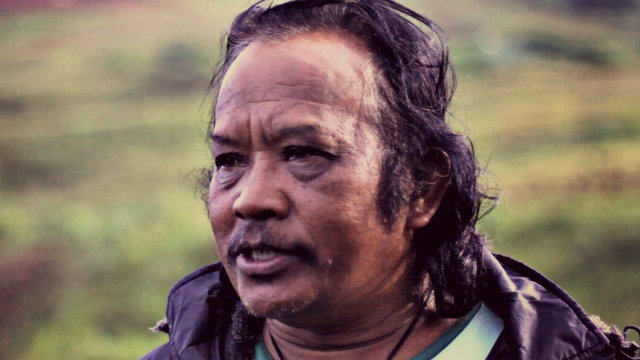SUMMARY
This is AI generated summarization, which may have errors. For context, always refer to the full article.
CAGAYAN DE ORO CITY, Philippines – In 2011, Typhoon Sendong (Washi) defaced the “City of Golden Friendship.”
The price we paid for our complacency was staggering and some lessons were learned the hardest way.
Sendong’s wrath was a painful eye-opener implanted in the memory of the city. But an eye-opener is an empty lesson when we do nothing to prevent it from happening again.

Possible solutions
Because environmental degradation is a major factor in disasters, the challenge now is to develop sustainable and long-term solutions, which include forest management and a behavioral shift to the “new normal.”
For Cagayan de Oro, which forms part of the catch basin of the waters from the highlands of Bukidnon, tracing where the problem starts requires us to go up the denuded forests of the two giants of the province, Mt. Kitanglad and Mt. Kalatungan.
The simple truth is what happens at the top trickles down to the lowlands.
However, protecting the watershed needs the cooperation of the upland communities and of the low-lying urban city. With this idea in mind, the Payment for Ecological Services (PES) program was born.
“PES is a strategy designed to protect our forest here in the highlands of Mindanao so that when it rains, the water will not be devastating by the time it reaches urbanized areas like Cagayan de Oro,” said Lordilie Enjambre, development management officer of the Mindanao Development Authority (MinDA) Region X.
MinDA is the government agency that initiated the program as part of the Mindanao 2020 Peace and Development Framework-MindaNOW! (Nurturing Our Waters).
PES encourages different stakeholders, including the Cagayan de Oro River Basin Management Council (CDORBMC), the academe, and public and private institutions to participate in a “payment scheme” to rehabilitate the hinterlands where the waters of the region originate.
Various institutions in CDO will reward indigenous peoples (IPs) as forest managers to ensure that watersheds along the region develop high water infiltration capacity.
Cooperation key
In Northern Mindanao, the project is piloted within the ancestral domain of the Miarayon-Lapok-Lirongan-Tinaytayan Tribal Association (MILALITTRA), one of the 12 Indigenous Peoples (IP) communities in the protected area of Talakag, Bukidnon where Mt. Kalatungan prominently stands 2,824m above sea level.
Mt. Kalatungan – the sixth highest peak in the country – has long faced environmental threats such as illegal logging and the hunting of endangered species.
Harboring diverse species of flora and fauna, Mt. Kalatungan was identified as part of a “Terrestrial Biodiversity Corridor in the Greater Mindanao biogeographical region.”
The mountain is among the 18 protected areas to be provided with PES technical and management assistance by both the public and private sectors.
“Three hectares will serve as the pilot area for PES here; two hectares of which in Sitio Tinaytayan, San Miguel will be allotted for reforestation and one hectare in Barangay Lirongan will be for agroforestry where MILALITTRA plans to grow cacao, coffee and other high-value crops to generate income for the community,” said Renante Salcedo, program coordinator of Xavier Science Foundation (XSF), a CDO-based NGO focusing on agricultural development and research. XSF acts as the fund manager of the program.
If the pilot project succeeds after a year, PES will entice more industries and investors to support this multi-sectoral endeavor. In the long run, it is expected to yield a continuous supply of potable water, cleaner air, profit generation for the IPs and reduce disaster risk in the region.
From their ancestral domain, the 5-year master plan aims to reforest 832 hectares, while 816 hectares will be utilized for agroforestry.
Furthermore, MILALITTRA dreams to build their tulugan or a sacred place for community dialogues and rituals, and to give incentives for the Bantay Lasang volunteers using the income from PES.
Deeply-rooted tradition
The forest for the IPs is more than just a mere place of greens and browns. It is a place bursting with life – the ultimate reason why the tribes here have fostered an intimate and protective relationship with the environment.
They believe that the forest, aside from being their source of livelihood, is an abode of unseen spirits, their ancestors, and the kingdom of their Supreme Being, Magbabaya.

“We live here. Our ancestors lived here. All our actions will affect the future generations. That is why we need to take care of our forest,” Datu Dungkoan “Rio” Besto of Miarayon said in Bisaya.
The locals strongly believe that disgracing and disrespectful nature’s resources would result to punitive actions from the gods, such as plagues, a decline in the harvest, and other disasters.
“This is our culture,” said Datu Rio. “What is there to life when the forests will be taken away from us.” – Rappler.com
Stephen J. Pedroza is a graduate of Development Communication at Xavier University-Ateneo de Cagayan. He is a researcher/writer for the Xavier Science Foundation and a former Rappler intern.
Add a comment
How does this make you feel?





There are no comments yet. Add your comment to start the conversation.